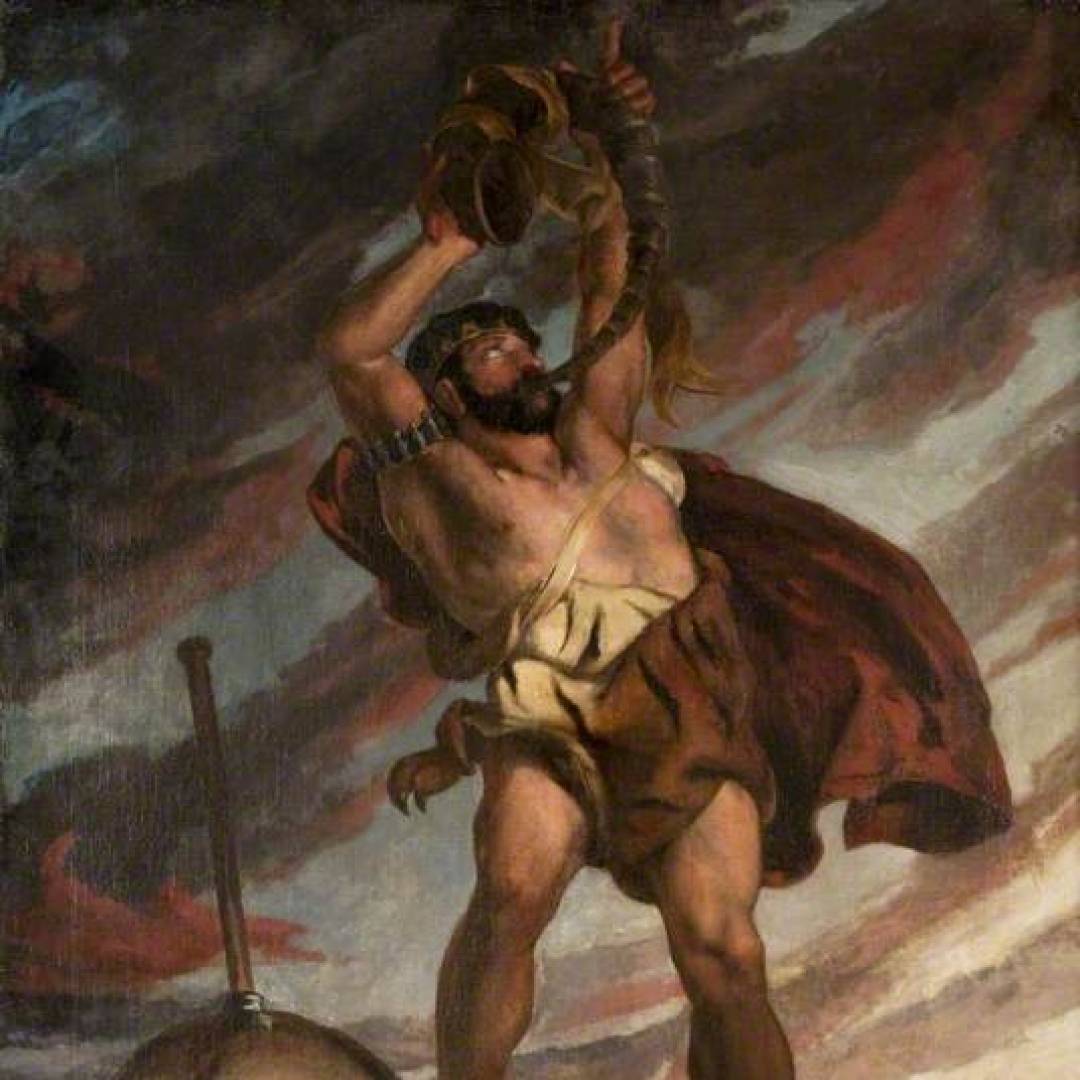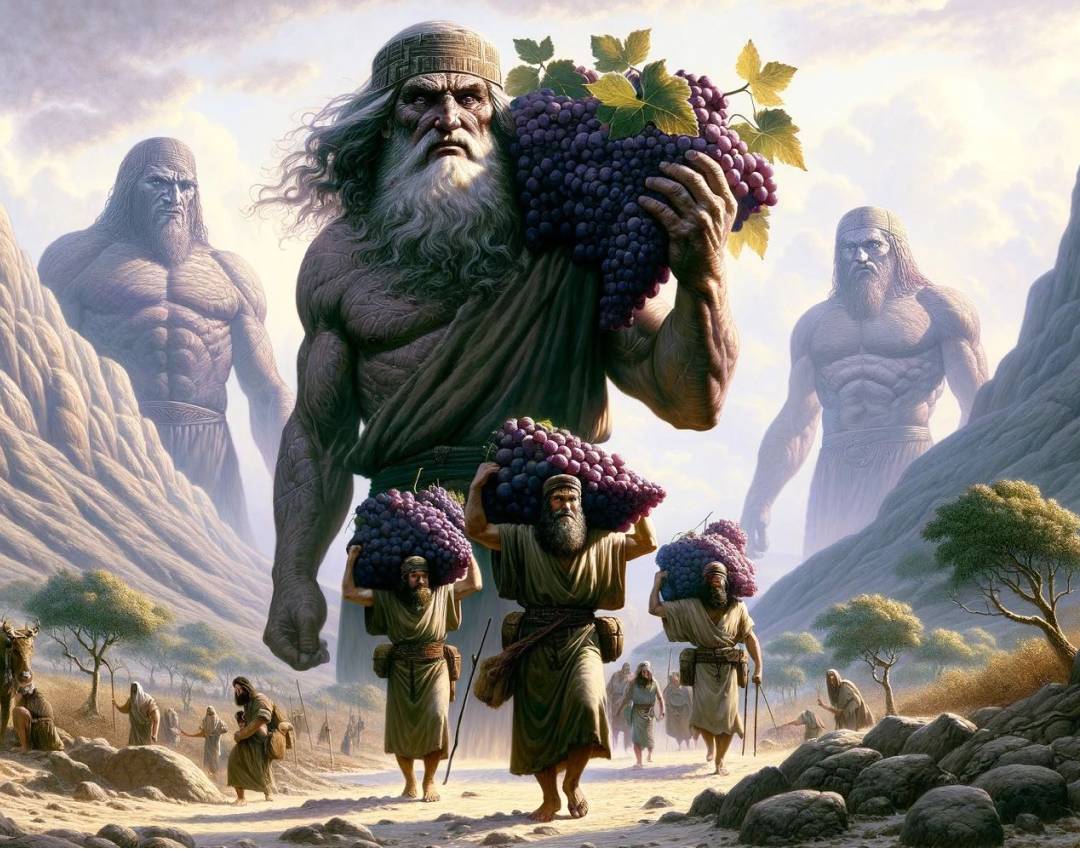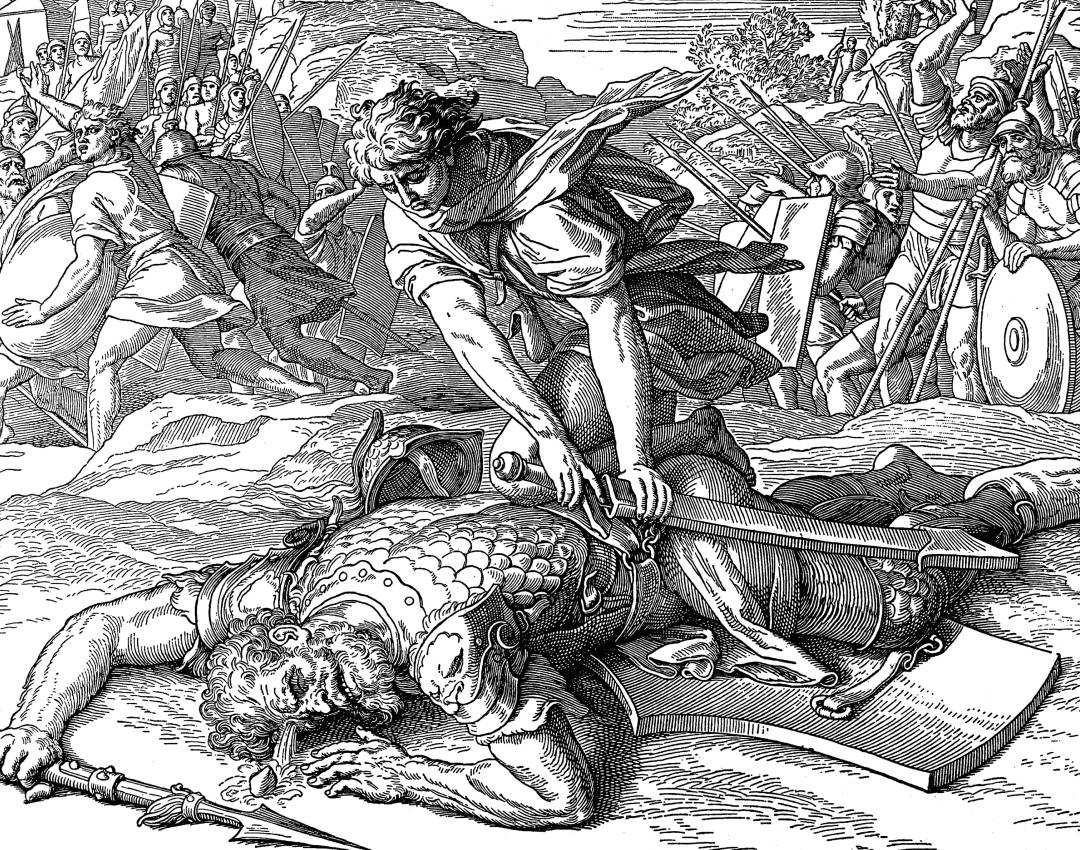In my video dedicated to giants, I wanted to address a theme that runs throughout the Bible, from the Book of Genesis to the Apocrypha, passing through rabbinical commentaries and historians such as Josephus. These are not marginal legends: the texts clearly speak of powerful figures with gigantic appearances, often linked to the Elohim and remembered with extreme fear. In this article, I retrace the main references to show how complex and surprising this topic is, a delicate subject that is too often hastily dismissed as mere myth or legend.
Nimrod and the genealogical anomaly
The first significant example we encounter in the Bible concerns a character who is still the subject of debate today: Nimrod. His appearance interrupts the regular flow of genealogies, as if he were a special annotation. This is not a marginal detail: the text defines him as gibbòr, meaning powerful, strong, the same term that in other passages will be used to refer to giants or gibborìm.
The Masoretic Bible does not directly link Nimrod to the Tower of Babel, but traditions do, presenting him as the one who tried to thwart the Elohim’s plan to divide humanity in order to better dominate it. In chapter 10 of Genesis, we read: “Cush begot Nimrod; he began to be powerful on earth. He was a mighty hunter before Yahweh” (Gen 10:8-9).
The figure of Nimrod, therefore, already appears as an element of rupture: not a simple descendant included in a list, but a character in his own right, characterized by strength, power, and the capacity for rebellion. Tradition has made him a symbol of defiance, comparing him to Orion and associating him with the Tower of Babel. In any case, Nimrod remains an ambiguous archetype: on the one hand, a powerful hunter “before Yahweh,” on the other, an expression of an alternative line to ordinary genealogy, almost as if he were a bridge between ordinary humanity and those extraordinary figures that the Bible defines as gibborim.

The sons of the Elohim and the Gibborim
And here we come to the crux of the matter: after learning about Nimrod and the peculiarity of his genealogy, the question becomes inevitable: Who were these gibborim mentioned in the Bible and whom we find connected to the figures of giants?
In Genesis 6:1-4, we read that when men multiplied, “the sons of Elohim saw that the daughters of men were beautiful, and they took them as wives… and they bore children.” The text adds: “These are the heroes of old, men of renown.” In Hebrew, the term gibborim appears here, the same term attributed to the singular (gibbor) to Nimrod.
I keep Elohim in the plural because translating it as “sons of God” alters the original meaning of the term. These stories describe unions between the Elohim and Adamite women that produced extraordinary individuals.
It is the same dynamic recounted in Greek myths: the gods united with mortal women, giving birth to half-blood heroes such as Heracles, credited with exceptional stature. And this was not just a myth: if we dig into the evidence, the stadium in Olympia—where the Olympics were born—had a stone marking the start and a stone marking the finish, and between the two stones there was a distance of 192 meters and 27 centimeters; this value was declared to be exactly 600 times the length of Heracles’ foot. Historical reality confirms the truth of the myth.
So Hercules was probably one of these anomalous beings, let’s say one of these giants. The Bible tells us about these giants. It mentions them often, for example in the two passages where it says that they had six fingers on each limb, 24 fingers in total, according to the biblical author. Just to say: look, I wasn’t wrong: they had six fingers, these giants had six fingers on each hand, six toes on each foot, and so in total they had 24 fingers…

Giants and fears in the Land of Canaan
The theme of giants returns forcefully in Numbers 13, when Moses sends twelve scouts to observe the land of Canaan, which they intended to conquer by force of arms. Returning from their mission, they report: ” We saw the giants, descendants of Anak, of the race of giants; in our eyes we seemed like locusts, and so we must have seemed to them” (Numbers 13:33). This is not a numerical comparison (there were only twelve scouts) but a comparison of physical proportions: in front of such imposing beings, the men felt as tiny and powerless as insects.
In the end, these explorers advised Moses’ men not to go against these characters, and because of their warning, which went against the instructions of Yahweh and Moses himself, most of them were killed.
The “democracy” of Yahweh: the “so-called God of love,” at the time, as we now know, did not allow objections.
Polydactyly and Og’s bed
The Bible also provides curious anatomical details about these frightening beings. In 2 Samuel 21:20 and 1 Chronicles 20:6, we read, as mentioned above, of giants with six fingers on each hand and foot, twenty-four fingers in all, and the author emphasizes this as if to say, “I was not mistaken, it was really so.”
In Deuteronomy 3:11, Og, king of Bashan, is mentioned, who was also a giant. The text states that “his bed was made of iron… nine cubits long and four cubits wide,” or about 4.1 × 1.8 meters. Here too, these are very concrete data, not symbols.

The rabbinic interpretation
Rabbinic tradition has long reflected on the descriptions of these giants. The teacher Abrāhām ibn ‘Ezrā explains that the Nephilim take their name from the Hebrew verb nafal (“to fall, to descend”), because “at the sight of them, the heart fell.” So they were so real and so frightening that those who saw them felt faint. This is an interesting note.
Nimrod himself, in various traditions, is associated with Amrafel, Abraham’s enemy, and even with Orion, the hunter son of Poseidon and a mortal woman, and therefore another half-breed. Here too, the overlap between the Bible and ancient myth is evident and undeniable…

The Book of Enoch and the sex of angels
An apocryphal but central text is the Book of Enoch, canonical for Coptic Christians. In the section called The Watchers, we read that “the angels, sons of heaven, descended upon Mount Hermon, swore together, and took wives from among the daughters of men; they conceived and bore giants” (1 Enoch:6,7).
Some translations specify that they descended “in the days of Yared,” a name derived from the verb yarad, “to descend,” which fossilizes the memory of a “great descent.” These angels, as Tertullian also recalls, had concrete sexual desires: in this regard, women at that time, especially if they had long hair, had to veil themselves for protection. This is not metaphorical language: it is, once again, narrative chronicle.

Giuseppe Flavio and the bones of giants
The Jewish historian Giuseppe Flavio, in Antiquities of the Jews (1st century AD), recounts that the Israelites conquered Hebron, where there remained “a race of giants who, because of their large stature and different appearance, were a horrible sight.” . He then adds: “Even today, their bones are still on display, unlike anything known.”
Giuseppe Flavio writes for the Romans and does not question the existence of giants. He tells us about bones that were visible in his time, in the same way that the Bible recounts that Og’s bed was still preserved.
The term Nephilim: fallen ones, miscarriages, or Orion?
The term Nephilim has also sparked centuries of debate. Some derive it from the Hebrew root n-f-l (“to fall, to descend”), with possible moral or concrete meanings. Others, such as the scholar Heiser, link it to an Aramaic origin: the singular nephila refers to the constellation of Orion. It is no coincidence that the Septuagint translates the term without hesitation as γίγαντες.
Some exegetical strands even speak of “selective abortions”: when the Elohim united with the Adamites, they are said to have given birth mainly to females and aborted males, as if they already knew prenatal analysis techniques. It is a hypothesis that, if given the consideration it deserves, opens up surprising scenarios.
Conclusion
Genesis, Numbers, Deuteronomy, the Book of Enoch, rabbinic traditions, and Giuseppe Flavio: different sources, but all converging on one fact, the memory of gigantic beings who lived among men. They are described as powerful, frightening, often enemies of Israel and the armies of Yahweh.
But ancient cultures on every continent on the planet speak of giants.
I cannot, of course, claim that this is the definitive truth, but I can say that it is implausible that peoples and cultures distant from each other in time and space would have invented identical tales. It is much more logical to think that they all passed down a common memory, which we now read in different forms.
This is why I choose to read the Bible literally, without theological filters. Not out of dogma, but out of respect for the texts, out of respect for the ancient authors who continue to repeat the same things: concrete stories that deserve to be taken seriously and that invite us to rediscover the possible true history of humanity.




